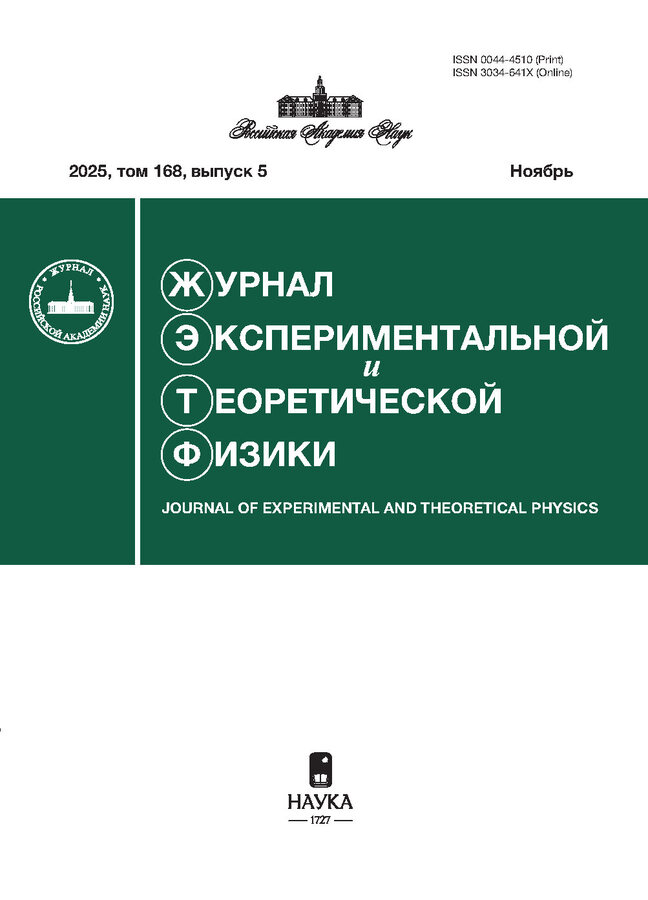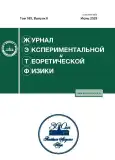On the Theory of Nucleation of Ionic Salts from Aqueous Solution
- Authors: Veshchunov M.S1
-
Affiliations:
- Nuclear Safety Institute (IBRAE), Russian Academy of Sciences
- Issue: Vol 163, No 6 (2023)
- Pages: 830-841
- Section: Articles
- URL: https://journals.rcsi.science/0044-4510/article/view/145421
- DOI: https://doi.org/10.31857/S0044451023060093
- EDN: https://elibrary.ru/DFOHXY
- ID: 145421
Cite item
Full Text
Abstract
The theory of nucleation of ionic salts from aqueous solution is critically analyzed and further developed in two limiting cases of sparingly and highly soluble strong electrolytes. In the case of sparingly soluble colloids with a relatively large screening length (compared to the radius of the critical nucleus), the classical nucleation theory is modified by taking into account the influence of the critical nucleus charge on the nucleation rate, which was disregarded in earlier models. In the opposite limit of highly soluble colloids which are characterized by a relatively small screening length, the influence of the critical nucleus charge on the nucleation rate can be neglected with good accuracy. However, the discrepancy with earlier models, mainly related to the value of the pre-exponential factor, can reach several orders of magnitude.
About the authors
M. S Veshchunov
Nuclear Safety Institute (IBRAE), Russian Academy of Sciences
Author for correspondence.
Email: vms@ibrae.ac.ru
115191, Moscow, Russia
References
- R. H. Doremus, J.of Physical Chemistry 62, 1068 (1958).
- P.-P. Chiang, M. D. Donohue, J. of Colloid and Interface Science 122, 230 (1988).
- P.-P. Chiang, M. D. Donohue, J. L. Katz, J. of Colloid and Interface Science 122, 251 (1988).
- R. J. Hunter, Introduction to modern colloid science Oxford University Press (1993).
- J. Lyklema, Fundamentals of Interface and Colloid Science, Vol. II: Solid-Liquid Interfaces, Academic Press (1995).
- M. Volmer and A. Weber, Z. Phys. Chem. 119, 253 (1926).
- R. Becker and W. Doering, Ann. Phys. 24, 719 (1935).
- Я. Б. Зельдович, ЖЭТФ 12, 525 (1942).
- T.P. Melia, J.of Applied Chemistry 15, 345 (1965).
- A. Mersmann, M. Kind, Chemical Engineering and Technology 11, 264 (1988).
- A. W. Adamson, Textbook of Physical Chemistry Academic Press (1973).
- G. J. Janz, R. P. T. Tomkins, C. B. Allen, J. R. Downey Jr., and S. K. Singer, J. of Physical and Chemical Reference Data 6, 409 (1977).
- P. Arendt and Kallmann, H., Z. fur Physik, 35, 421 (1926).
- J. Tb. G. Overbeek, in: Colloid Science, Vol. I, ed. by H. R. Kruyt, p.162, Elsevier, Amsterdam (1952).
- M. Kind and A. Mersmann, Chemie Ingenieur Technik 55, 720 (1983).
- A. A. Chernov, Soviet Physics Uspekhi 4, 116 (1961).
- S. K. Friedlander, Smoke, Dust and Haze: Fundamentals of Aerosol Behaviour, New York (1977).
- M. S. Veshchunov, J. of Nuclear Materials 571, 154021 (2022).
- D. Kashchiev and G. M. Van Rosmalen, Crystal Research and Technology: J. of Experimental and Industrial Crystallography 38, 555 (2003).
- L.G. Sillen and A.E. Martell, Soil Science 100, 74 (1964).
- A. E. Nielsen, Pure and Applied Chemistry 53, 2025 (1981).
- J.H. Jonte and D.S. Martin, Journal of the American Chemical Society 74, 2052 (1952).
- A. E. Nielsen, Acta Chem. Scand. 15, 441 (1961).
- A. E. Nielsen, Kristall Technik 4, 17 (1969).
- G. C. Sosso, J. Chen, S. J. Cox, M. Fitzner, P. Pedevilla, A. Zen, and A. Michaelides, Chem. Rev. 116, 7078 (2016).
Supplementary files










